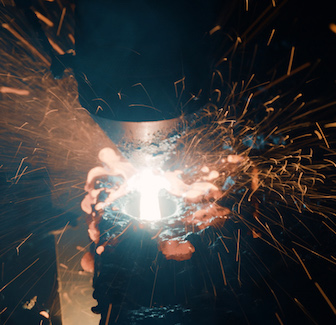Reduce Piercing Time Up To 40% on Thick Steel
Thermal Dynamics Automation’s new QuickPierce function speeds the piercing time on 400-amp cutting systems. Their cost calculator demonstrates long-range savings you can realize, thanks to improvements that extend the life of 400-amp consumables.
Posted: June 2, 2020
Thermal Dynamics Automation’s (West Lebanon, NH) upgraded 400-amp cutting system features Ultra-Cut 400 XT high-precision power source, XT torch with QuickPierce consumables, and iCNC Performance Controller. The result: 40 percent reduction of piercing time on mild steel thicknesses ranging from 1.25 to 2.0 (30 to 50 mm). And that parlays into reduced cycle time, especially for plates with a complex parts nest.
Thermal Dynamics also improved the front-end components on its 400-amp consumables and made several other arc-starting enhancements to increase parts life, cut longer between consumable changes and lower total cut cost.
“We improved the gas flow routine within the Ultra-Cut 400 XT high-precision power source and the 400-amp QuickPierce consumables feature more shielding gas ports on the shield cap,” explains Dirk Ott, vice president, Global Mechanized Plasma Systems, Thermal Dynamics Automation. “By increasing gas pressure during arc start, we reduce pierce time. Combined with the additional shielding gas ports, we deflect more molten metal away from the consumables. Thermal Dynamics offers a robust solution for cutting steel up to 2 inches thick.”
New Routines
The company improved consumables life by adding pierce-on-the-fly and pierce-puddle-avoidance routines within its iCNC Performance Control. Traditional piercing routines keep the torch positioned over one spot until the plasma jet pierces completely through the plate; once the controller senses the pierce, it then moves the torch along the cut path. This routine inherently exposes the consumables to more molten metal.
“Pierce-on-the-fly starts moving the torch after about one-third of the total pierce time,” says Ott. “The groove behind the torch provides an evacuation path for the molten metal, reducing its impact on the consumables. Also, you don’t have to cut through slag puddle at the end of the cut, which promotes a cleaner cut.”
Pierce-puddle-avoidance also extends consumables life by preventing the front end of the torch from touching the puddle during arc start. During arc start, the torch touches the plate, moves to an arc initiation height (which is relatively low) and starts the arc. After a split second, the controller raises the torch to a higher level, holds it there until the arc penetrates the plate, then lowers the torch to cutting height.
“Pierce-puddle-avoidance keeps the torch at a higher level for a second or two longer to minimize the impact of spatter and the chance of touching the puddle,” says Ott.
An integrated Thermal Dynamics system offers industry-best combinations of performance, cut quality and lowest total cost of ownership, especially through improved consumables life. The company offers a cost savings calculator that enables fabricators to see how much they can save by upgrading to a Thermal Dynamics system.















